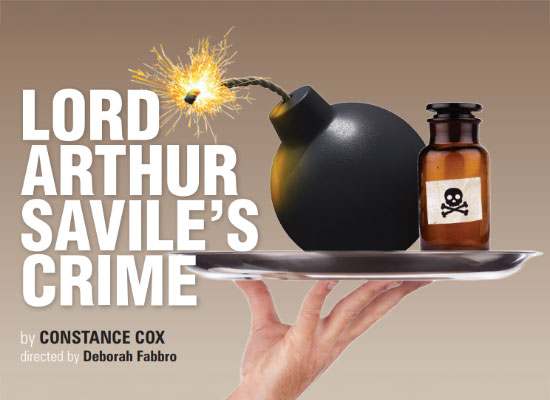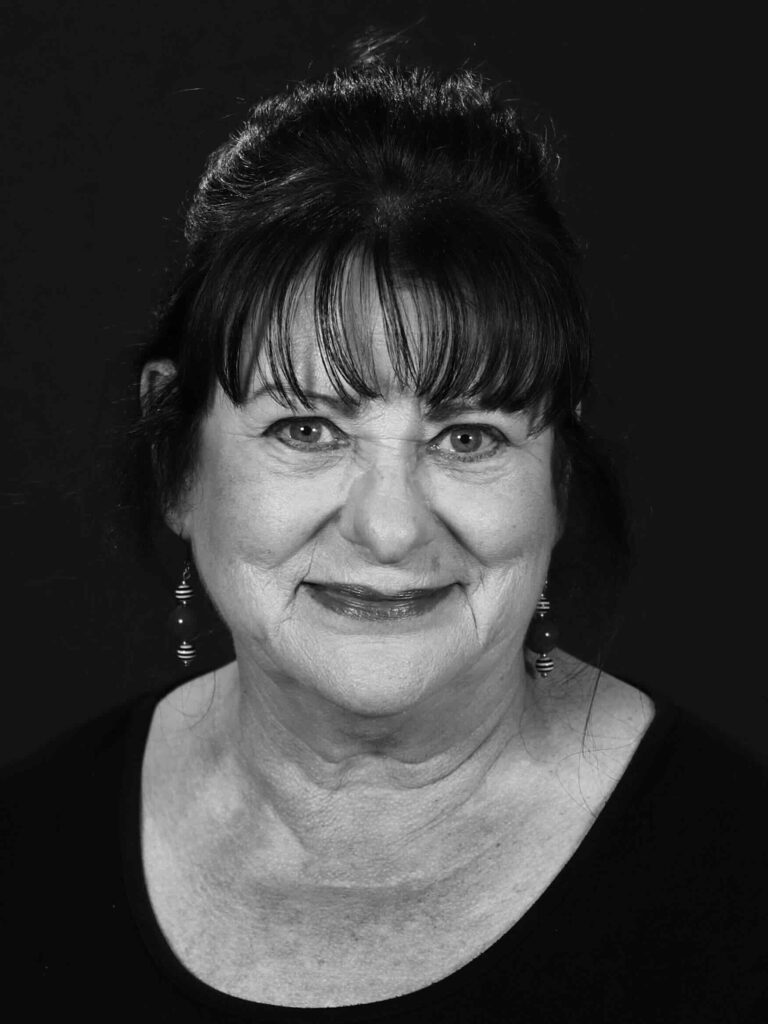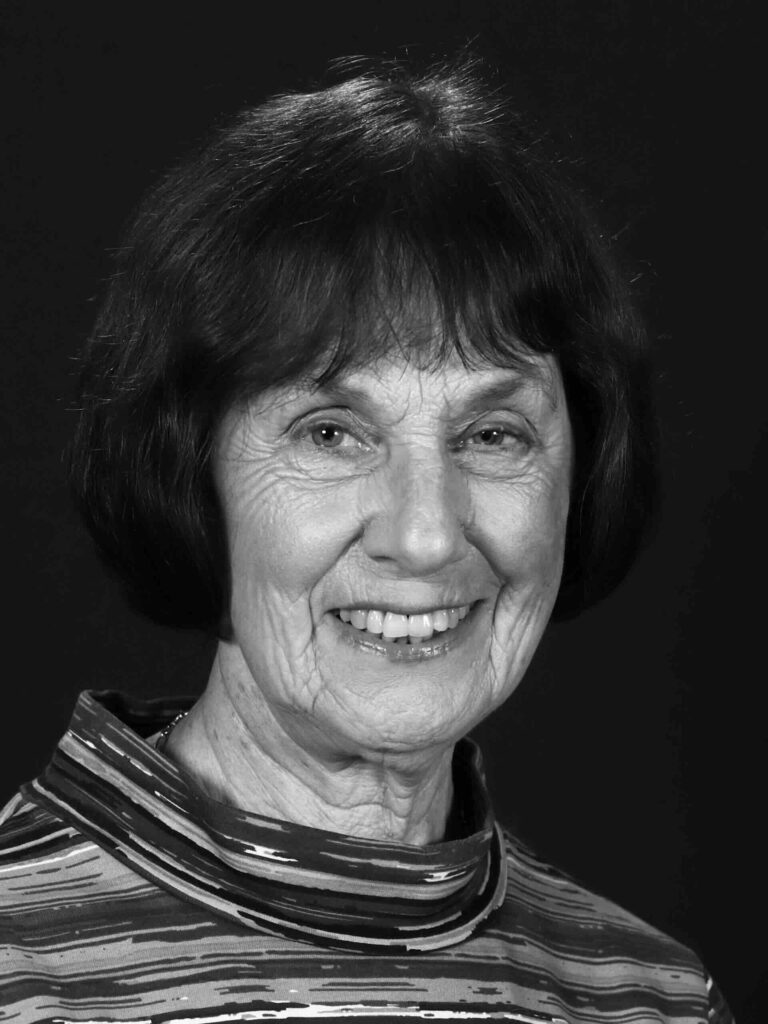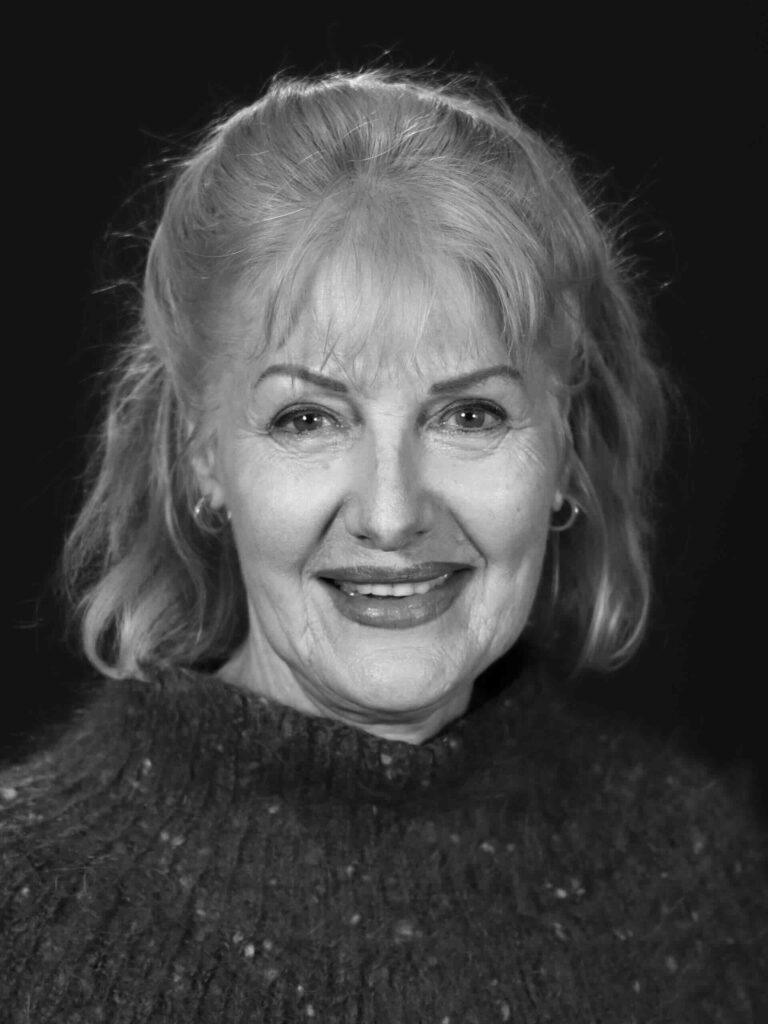Past Show
Lord Arthur Savile's Crimes
WRITTEN BY CONSTANCE COX
DIRECTED BY DEBORAH FABBRO

It is 1925, and the social season is in full swing. Wealthy, debonair young man-about-London, Lord Arthur Savile, is on top of the world. He is doted on by his elderly, aristocratic relatives, and engaged to Sybil Merton, the girl of his dreams. At a party, his palm is read by a fashionable cheiromantist, who foretells that he will commit a murder. Horrified at the potential shame this will bring his bride, Arthur decides that it’s his duty to get the murder out of the way, discreetly, before he marries Sybil. But, which of his relatives is the most expendable?
Aided by the services of his Jeeves-like butler, Baines, and a seedy German anarchist, with an array of guns, bombs and poisoned chocolates, Lord Arthur sets about his noble task – with increasingly hilarious results.
NOTE: This performance will have recorded gunshot sound effects.
WHEN:
24 July – 2 August
Cast

Director
Deborah Fabbro
Deborah is very pleased to return to Mordialloc Theatre Company where she has previously directed ALL THINGS CONSIDERED, THAT GOOD NIGHT, HOTEL SORRENTO and VISITORS. Other recent directing credits include the world premiere season of KNIFE EDGE at Beaumaris Theatre, A LADY OF LETTERS, THE BLINK OF AN EYE and ADMISSIONS with Brighton Theatre Company, AGNES OF GOD with Williamstown Little Theatre and THE LIFESPAN OF A FACT at Malvern Theatre Company. Some other credits include THE ARCHITECT, MR BAILEY’S MINDER, FACE TO FACE, THE CEMETERY CLUB, SCOTLAND ROAD, THE RETURN, MAN ALIVE, HALPERN AND JOHNSON, COUNTING SPARROWS and TABLE MANNERS. Her production of the play SECOND SIGHT received several awards at the One-Act Plays Festivals around Victoria. She and the cast were then invited by the playwright to tour the production to Tasmania. A recording of the play was presented as an online season which was seen as far away as the UK and the USA. She has also been honoured to receive VDL, Encore, and BTC awards.

Baines
Stuart Daddo-Langlois
With a hiatus of fifty years since playing Sir Thomas Fairfax in THE TRIAL OF CHARLES I, Stuart’s performance drought finally ended with THE HISTORY BOYS with Frankston Theatre Group in 2021, then ARSENIC AND OLD LACE with Rosebud Theatre in 2021 then back to Frankston for ONE MAN, TWO GUVNORS in 2023 and LAST TANGO IN LITTLE GRIMLEY in 2023. In 2024 he appeared in NIGHT WATCH with Gemco Players. Stuart was most recently seen at Mordialloc in AND THEN THERE WERE NONE in 2024.

Lord Arthur Savile
Rory McGrath
This marks Rory’s fourth production with Mordialloc Theatre Company, previously treading the boards in AND THEN THERE WERE NONE and SUMMER OF THE SEVENTEENTH DOLL and was Assistant Director for HOLMES AND WATSON. Recently, Rory performed in Brighton Theatre Company’s One Act Play Season with Agatha Christie’s THE RATS and he wrote TEMPORAL SNAPS, which he performed at Chapel Off Chapel. Rory comes from an extensive background in filmmaking and theatre, serving as an actor, writer and director for numerous productions across Melbourne and Darwin.

Sybil Merton
Amy Penning
Amy studied the Acting Essentials course at 16th Street Actors Studio (2022-2023). She performed with Eltham Little Theatre in MUCH ADO ABOUT NOTHING as Hero in 2023 and as Hope and Ginette in ALMOST MAINE in 2023. Amy previously performed last year with Mordialloc Theatre Company in VERONICA’S ROOM as the Girl. Earlier this year she performed with Mornington Players Theatre Company as Maria in TWELFTH NIGHT. She has really enjoyed working on this fun production of LORD ARTHUR SAVILE’S CRIME and hopes you enjoy it as much as she has.

Dean of Paddington
Anthony Staunton
Anthony has worked in community theatre for over 27 years and has performed in over 40 productions in a variety of comedies and dramas. He has worked with Southern Peninsula Players, Frankston Theatre Group,
Mordialloc Theatre Company, Dionysus Theatre and Ringwood PLAY IN A DAY. Anthony has had a long association with Frankston Theatre Group, joining in 2005 and performing in a wide range of characters from DAVIS COPPERFIELD to a hapless husband in WHOSE WIVES ARE THEY. In his most recent role he portrayed Mr Arthur Birling in AN INSPECTOR CALLS.

Lady Windermere
Jennifer Mettner
This is Jennifer’s first time at Mordialloc Theatre Company. She is delighted to play the role of Lady Windermere – transporting back to London’s ‘upper class society’ in the 1920’s. Jennifer’s other productions include STEEL MAGNOLIAS (Lyrebird Nomination), LAST CAB TO DARWIN, CALENDAR GIRLS, DIMBOOLA, DINKUM ASSORTED, THE OLD PEOPLE ARE REVOLTING (Lyrebird Nomination) all with Phoenix Theatre, THE FULL MONTY with 1812 Theatre, JACK’S HIGH with Eltham Little Theatre and MILLIE’S WAR with Gemco Players and many others.

Lady Clementina Beauchamp
Christine Bridge
A Life member of Mordialloc Theatre Company, Christine was last on stage here in 2024 when she played the acidulous spinster, Emily Brent, in AND THEN THERE WERE NONE. Later that year she appeared with Gilbert and Sullivan Opera Victoria in a compilation of Gilbert’s short plays. In 2023 Christine appeared with Brighton Theatre Company as retired academic Elizabeth Blackwood in FRACKED and with Peridot Theatre Company as down to earth housekeeper, Mrs Terence in NIGHT MUST FALL. Over the years she has also been able to indulge her inner child in a variety of roles in Encore Theatre’s pantomimes.

Lady Julia Merton
Heather Lythe
Heather attended Drama school in the UK and worked in repertory theatre and fringe theatre. Since then and some years ago, she performed at Malvern Theatre Company in RAPTURE by Joanna Murray Smith as Henny and in LOYAL WOMEN by Gary Mitchell as Maureen. At Peridot Theatre she performed in ANCIENT LIGHTS by Shelagh Stephenson in 2016.
Heather is delighted to be working in this fun play, her first production with the Mordialloc Theatre Company

Mr Podgers
Bill Konstantinidis
Bill been involved in community theatre shows both locally and abroad. His previous roles include a London police inspector in WITNESS FOR THE PROSECUTION with Malvern Theatre Company in 2021 and an Italian opera star in LEND ME A TENOR for Riyadh Community Theatre in 2018. We welcome Bill for his first role with Mordialloc Theatre Company.

Nellie
Zoe O'Neill
Zoe is currently taking classes at the Beaumaris Theatre and has been involved in five end-of-term productions including abridged interpretations of LADIES IN BLACK and STEEL MAGNOLIAS, a monologue festival and improv performances. Zoe has been studying drama since high school, in theatre and filmmaking. Zoe is excited to be making her theatre debut with Mordialloc Theatre Company.

Herr Winkelkopf
Barry James
Barry is a graduate of the National Theatre Drama School. He has enjoyed four decades of performing across many of Melbourne’s community theatres. Barry received the Best Actor Award for THE WINSLOW BOY at Malvern Theatre Company; The Victorian Drama League’s Best Supporting Actor Award for his role as Monsieur Bonnefoy in Heidelberg Theatre Company’s production of THE IMAGINARY INVALID. His television credits include BLUE HEELERS, SEA CHANGE and MDA. His recent theatrical endeavours include stage managing for multiple productions. Barry is delighted to return to the Mordialloc stage after a long break.
